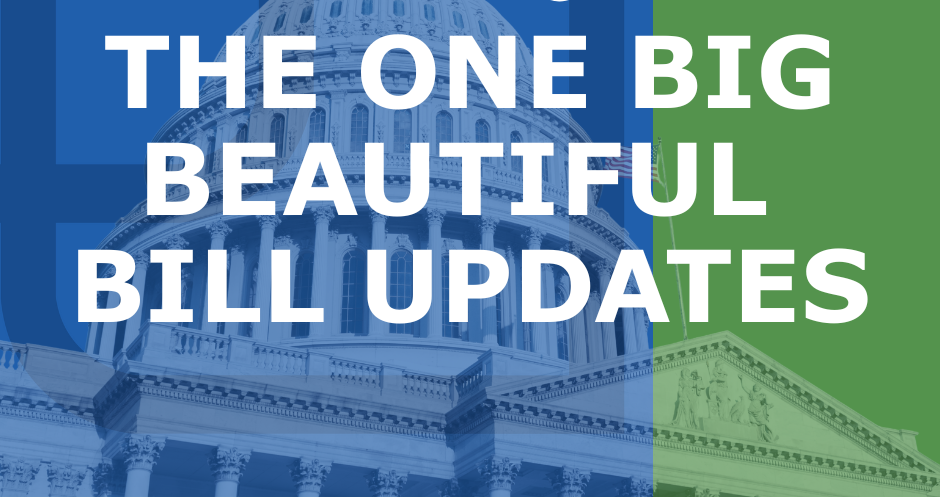In July 2025, the One Big Beautiful Bill Act (OBBBA) was signed into law, introducing sweeping tax reforms that are set to reshape the financial landscape for American families. Among the most significant provisions is a permanent expansion of the Child Tax Credit (CTC), aimed at providing enhanced support to families with children. This change not only helps offset the rising cost of living but also offers more predictability in tax planning by preventing a scheduled rollback of previous credit enhancements.
Below, we explore the key updates brought by the OBBBA, detail the new eligibility rules, and explain what these changes mean for taxpayers and practitioners.

Background: The Child Tax Credit Before the OBBBA
Prior to the enactment of the OBBBA, the Child Tax Credit was capped at $2,000 per qualifying child under age 17. Up to $1,400 of this amount was refundable, known as the Additional Child Tax Credit (ACTC). However, without legislative intervention, the credit was set to drop to $1,000 per child after 2025. Additionally, the expanded income limits introduced by the 2017 Tax Cuts and Jobs Act (TCJA) were also scheduled to expire.
Key Changes Under the OBBBA
Higher Credit Amounts:
Starting in the 2025 tax year, the maximum credit increases to $2,200 per qualifying child. Both the credit itself and the refundable portion—beginning at $1,400 in 2024—will now be adjusted annually to keep pace with inflation.
Permanent TCJA Expansions:
The OBBBA makes permanent the higher income phaseout thresholds introduced by the TCJA. These thresholds are $400,000 for joint filers and $200,000 for all other filers. The $500 nonrefundable credit for other dependents, such as those who are not qualifying children, is also now a permanent feature of the tax code.
Inflation Adjustments:
To ensure the credit remains effective over time, both the total credit amount and the refundable portion will be indexed annually for inflation, offering continued support amid rising living costs.
Stricter Identification Requirements:
To claim the credit, both the taxpayer and each qualifying child must have a valid Social Security Number (SSN) issued before the tax return’s due date. This rule enhances compliance and helps prevent fraud.
Other Key Rules Maintained:
Despite these changes, the foundational eligibility criteria remain the same. Children must still be under the age of 17 at the end of the tax year and meet all standard dependency, residency, and citizenship requirements.
Who Qualifies — and How the Phaseout Works
To be eligible for the CTC, a child must be under age 17, a U.S. citizen, national, or resident alien, claimed as a dependent, and possess a valid SSN.
The credit begins to phase out for taxpayers with incomes exceeding the threshold amounts—$400,000 for joint filers and $200,000 for all others. The phaseout reduces the credit by $50 for every $1,000 of income above these thresholds, which will also be adjusted for inflation going forward.
Refundability Rules
The refundable portion of the credit (ACTC) is determined based on income and other qualifications. It is capped at 15% of earned income over $2,500 and is limited to a maximum amount that increases annually with inflation—starting at $1,400 in 2024. However, taxpayers who exclude foreign earned income are not eligible for the refundable portion.
Why the Change?
The OBBBA's expansion of the Child Tax Credit is intended to stave off the credit’s scheduled reduction after 2025. In doing so, it provides more robust support to working families, particularly in the face of continued inflation. By making the enhanced credit permanent and predictable, the legislation simplifies long-term tax planning. Policy analysts suggest these updates will increase after-tax incomes, reduce child poverty, and potentially contribute to a higher federal deficit.
Filing and Compliance Tips
Taxpayers should be aware that incorrect or fraudulent claims can carry serious consequences. Penalties may include a two-year or ten-year ban from claiming the credit, depending on the nature of the violation.
Final Thoughts
The OBBBA’s enhancements to the Child Tax Credit mark a meaningful shift in family tax policy. By increasing the credit amount, indexing it for inflation, and solidifying higher income thresholds, the law provides American families with stronger financial support and a more stable framework for planning.
For any questions about the updated Child Tax Credit or other changes introduced by the OBBBA, contact your advisor at Rudler, PSC at 859-331-1717.
Important: These are all new changes, and further guidance from the IRS and Treasury Department is expected. The details may change as new regulations and clarifications are issued. Be sure to consult with your tax advisor to understand how these changes affect your specific situation.
RUDLER, PSC CPAs and Business Advisors
This week's Rudler Review is presented by Josh Myers, Senior Accountant.
If you would like to discuss your particular situation, contact Josh at 859-331-1717.

As part of Rudler, PSC's commitment to true proactive client partnerships, we have encouraged our professionals to specialize in their areas of interest, providing clients with specialized knowledge and strategic relationships. Be sure to receive future Rudler Reviews for advice from our experts, sign up today !